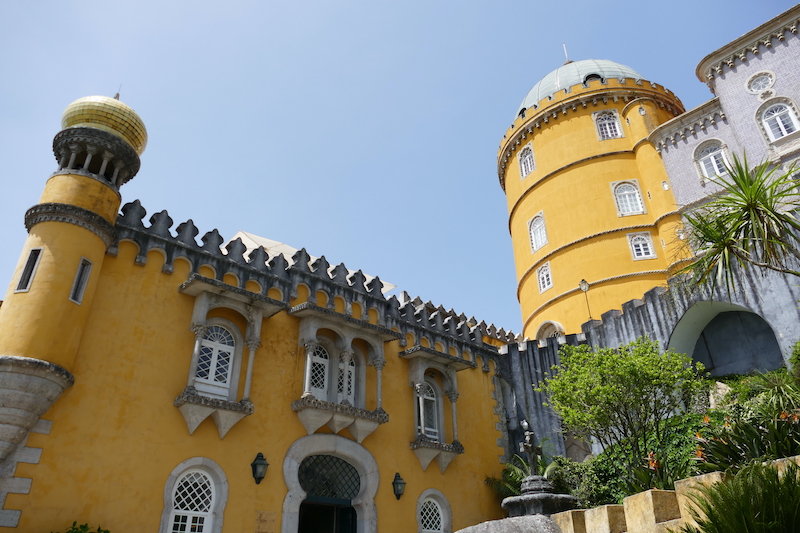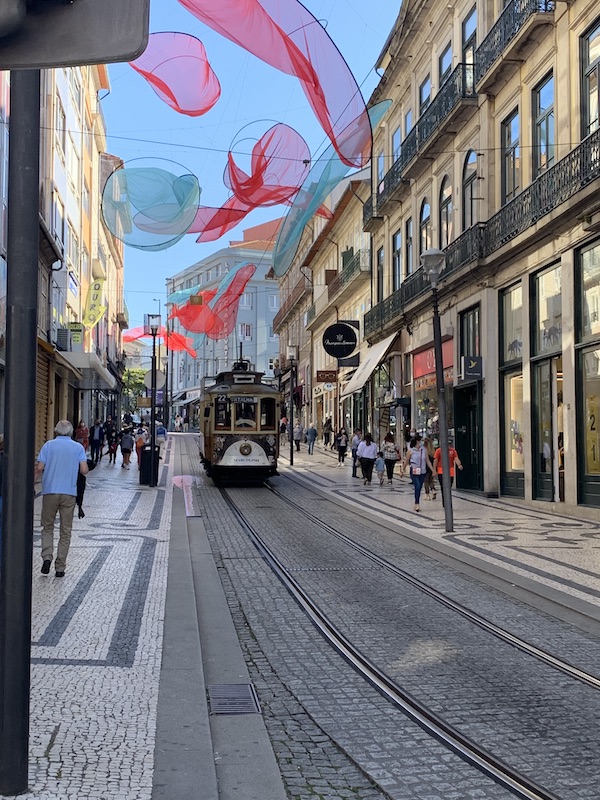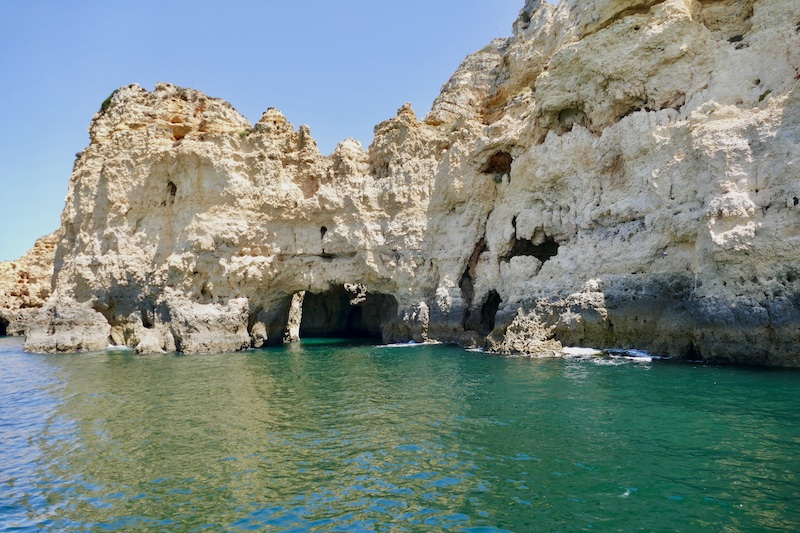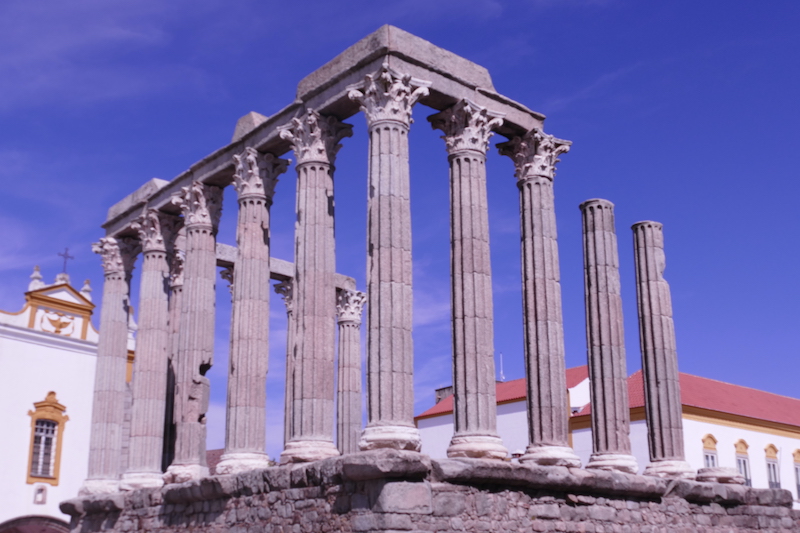After more than a year of being unable to visit Europe, when Portugal reopened to Americans last summer, I was on one of the first planes. Just desperate to return to Europe and get a sense of nor-mal summer vacation, I knew little about the nation on the western coast of the Iberian Peninsula. Perhaps facing the unexpected in a time where the unexpected had become the norm heightened all of my senses. Simply put, Portugal took my breath away. Before the pandemic, Portugal saw 27 million visitors in 2019. That’s just a drop in the bucket compared to its bordering neighbor, Spain, which welcomed more than 83 million people that same year. But as I write this, during Spring Break, I know three different families currently in Portugal. Has the secret gotten out that Portugal offers a similarly diverse geography as Spain, has fantastic food and wine, is home to a welcoming nation of people, and is filled with a history of explorers, Roman conquests and medieval castles? Considering 12 million people packed into the city of Barcelona alone in 2019, Portugal gives travelers to Iberia a chance to spread out and truly get a sense of its culture, its people and its land. And while some may only embark on a trip to its two main cities—Lisbon and Porto—spending a week or two exploring a country 1.6 times smaller than the state of Georgia is not impossible and certainly a better way to get to know the country that has personally become one of my favorites.
Here are the different areas you’ll want to visit.

GREATER LISBON
The capital city of Lisbon is often the first stop for travelers flying into Portugal. Situated along the Tagus River, the hilly city is filled with red-tiled roofs above white-washed and pastel-colored buildings. Crossing the river is a red suspension bridge, Ponte 25 de Abril, a smaller yet near-identical version of San Francisco’s Golden Gate Bridge. Bright yellow cable cars maneuver along the city’s main streets, and overlooking the river is the city’s Christ the King statue, inspired by Rio de Janeiro’s Christ the Redeemer. These familiar sights may make you think you’ve seen Lisbon before, but the city certainly has its own vibe and energy.
For the prettiest views, walk along the river toward Belém. You’ll pass museums and memorials en route to the monument to maritime explorers and the Tower of Belém in the sun-drenched area of town. Seafood restaurants are aplenty but no matter how much you eat, locals and anyone who has visited before will suggest you save room for the cooked custard pastry famous in Lisbon and Belém—although arguments may occur as to which of the similar pastries are better or even the original. (Most say Pastéis de Belém versus Pastéis de Nata.)
In the opposite direction is Lisbon’s hilltop Moorish castle, found in the Historic Almada neighborhood with smaller, winding streets and many, many stairs to climb. In the evenings, the bustling restaurants and nightclubs of Bairro Alto come to life. While its energy is not to be missed, first-time visitors make the mistake of staying in the energic neighborhood only to find the echoing nightlife can last into the wee hours of the morning.
Cascais is on the outskirts of Lisbon’s sprawling city, less than an hour away. Facing the Atlantic Ocean, this charming seaside city has a South of France beach vibe and provides expansive golden-sand beaches flanked by seaside cliffs to enjoy. Make your way to Boca do Inferno for a cliff with an open cave and be sure to grab lunch or dinner at the neighboring restaurant of the same name—the hottest ticket in town when the sun is setting and its floor-to-ceiling windows provide ocean views.
Just north of Cascais is a national park in which the hillside town of Sintra awaits. With its shady hills catching ocean breezes, this area was where Lisbon’s royal and wealthy families would retreat during summer’s heat. Stunning palaces that include Quinta da Regaleira and the colorful National Palace stand alongside a Moorish fortress, the Castelo dos Mouros. While you could cram in a five-attraction tour in one day, spend time in this adorable village where cars are limited and people travel on foot or via tuk-tuks with motors better suited to riding mowers. It’s a magical place.

PORTO
Just as how our capital city, Washington, D.C., and our largest city, New York, differ, so, too, does Porto from Lisbon. Porto’s buildings are not bright and colorful but more a shadowed hue of grays and blues, particularly those covered in the blue-and-white glazed tiles, azulejos, famous across the Iberian Peninsula. You’ll find nearly 11,000 azulejos tiles on the façade of the Igreja de Santo Ildefonso and nearly 16,000 on the Capela das Almas, both constructed in the 18th century.
The birthplace of Portugal’s Port wine, Porto is half the size of Lisbon but packed together more tightly so one can walk around and take in more of its sights and attractions. The city feels more cosmopolitan. Here, business people in suits, drinking their ruby red port, showcase a city seeming more about work than the pleasures of lighter Lisbon. Although the central city is on the northside of the Douro River, it’s the southern side’s caves where Port is made. Grapes brought down the river from the Douro Valley are kept in wine caves to ferment into various hues of port, and from the riverside vantage, visitors can sample numerous port houses that date back hundreds of years while taking in the views of Porto.
Daytrips into the Douro Valley can easily be enjoyed, where the stepped vineyards give Tuscany a run for its money just 1.5 hours outside of the city, depending on your mode of transportation. Or head an hour south of Porto to visit the Venice of Portugal, Aveiro.
Here, canals and lagoons are filled with large and vibrant gondolas known as barcos moliceiros carrying passengers through the town’s waterways where the boats once harvested seaweed.

THE ALGARVE
European vacationers and expats flock to Faro, the capital of the Algarve region. This southernmost area of the continental country (as Portugal has islands between its mainland and Africa) is renowned for its beaches. Stunning cliffs and eroded rock formations flank the shoreline, best viewed by boats taking visitors into the Atlantic for leisure and fishing excursions.
Here, the cities are not as large as Portugal’s east coast and instead filled with fishing villages. Lagos and Faro are home to most hotels, shops and restaurants and provide a good home base for exploring the rugged coastline and wiling away sunny days on practically empty, hidden beaches. Walk into a restaurant and you’re likely to see fish on ice ready for your choosing, caught fresh that morning or afternoon. The Algarve is more than a region; it’s also a feeling. It’s laidback, relaxed and time slows until it’s time to leave and you wish the clock would stop so you can spend more time living the seaside lifestyle.

SMALLER GEMS
East of Lisbon and over halfway to Spain, you’ll find Évora.
Surrounded by cork trees (the country produces more than half of the world’s supply), this dry area of the country can experience some serious heat. Perhaps that felt like home to the Romans who occupied the land in ancient times. The ruins of their Temple of Diana have stood ground here since the 1st century. While it is impressive to view, the macabre Chapel of Bones is the small city’s main attraction. Constructed in the 16th century, the chapel is lined entirely with bones and skulls of monks, serving as a reminder that we are all the same in the end.
Évora’s medieval city walls still surround the city, with the lovely Hotel M’AR de AR Muralhas resort nestled into the walls. Whether from a balcony room perch or sitting poolside, the backdrop of the ancient fortress walls is not something one sees every day. Although there are no actual remains of Roman baths, Inacquaveritas spa is modeled after the practice with underground pools illuminated with soothing blues, greens and purples.
Between Lisbon and Porto, find the medieval village of Óbidos, where cobbled streets have barely changed since the town’s creation. Pass white-washed buildings housing quaint shops and restaurants and often covered in red and pink Bougainvillea in this hidden Central Portugal gem. You’ll spot open windows to shops offering Ginja de Óbidos, a sour cherry liqueur invented by the area’s monks in the 17th century. Often served in a chocolate cup, samples are readily available and not to be missed.
Nonstop flights to Portugal are rare and even Delta will fly you first to New York or Spain. While this may mean it will take some time to reach Portugal, there isn’t a moment you’ll regret your visit. Founded in 1143, Portugal is considered the oldest of Europe’s countries and has a rich history and is home to 17 UNESCO World Heritage Sites. There is much to see and explore in this small nation, and you better move quickly before more and more people discover it and its streets begin to fill with more tourists than locals. That would be a shame because, as is, it’s one welcoming place where you can get a true sense of Portuguese life. And it’s enchanting.
